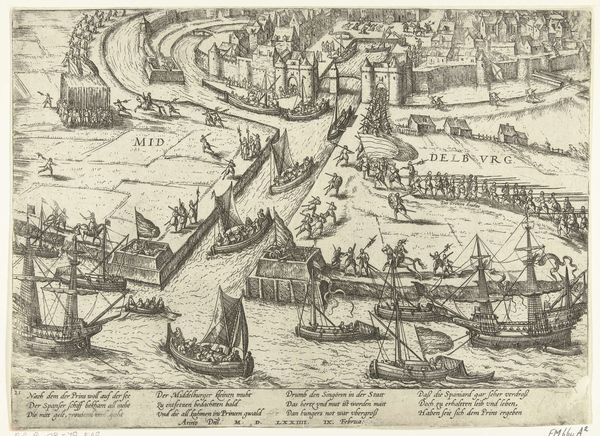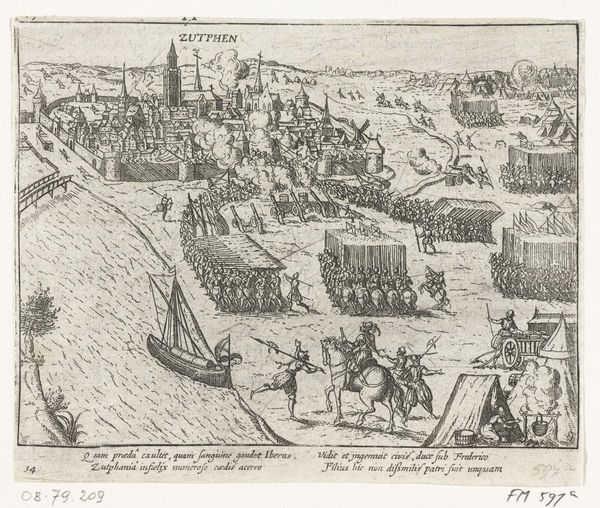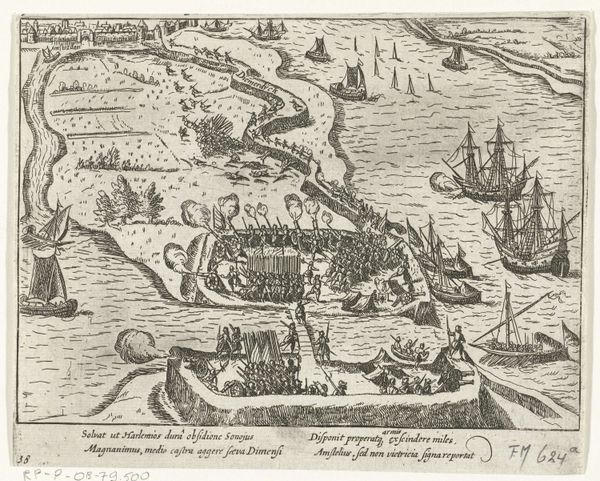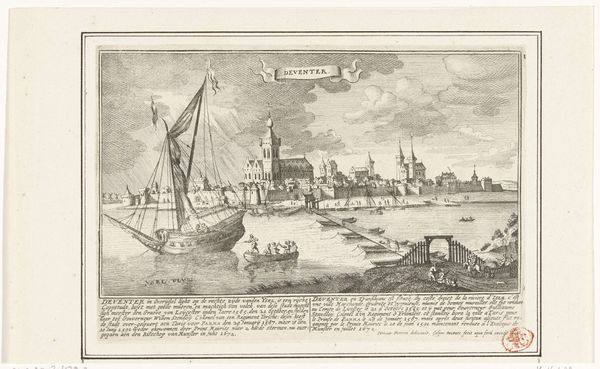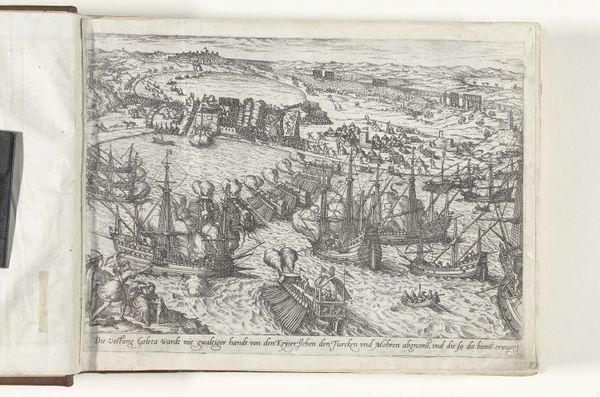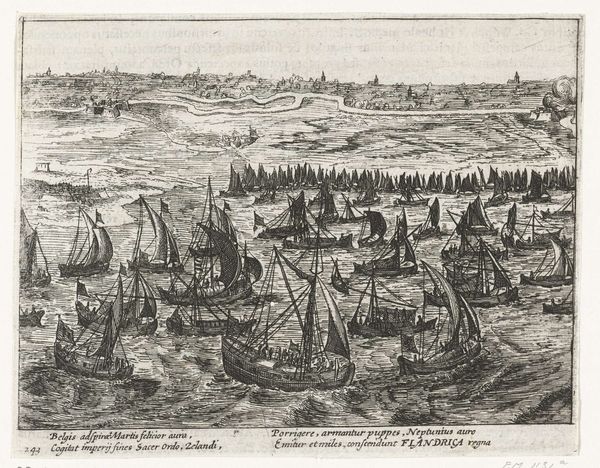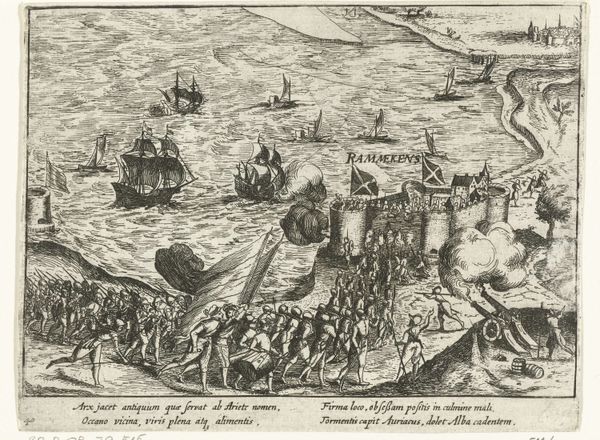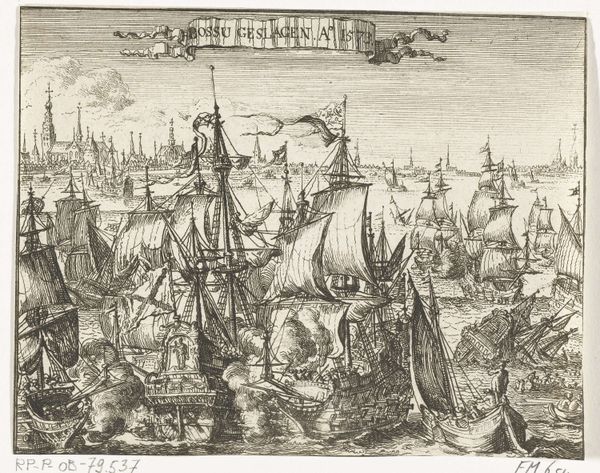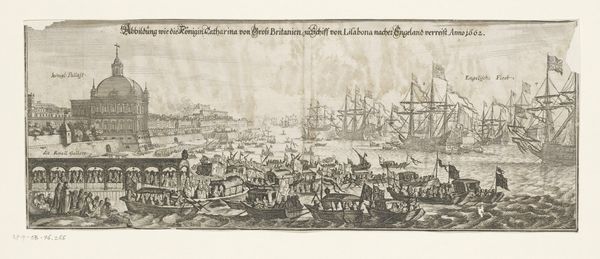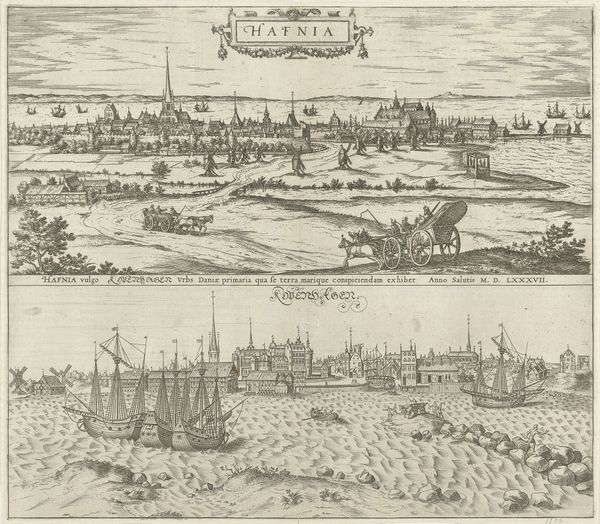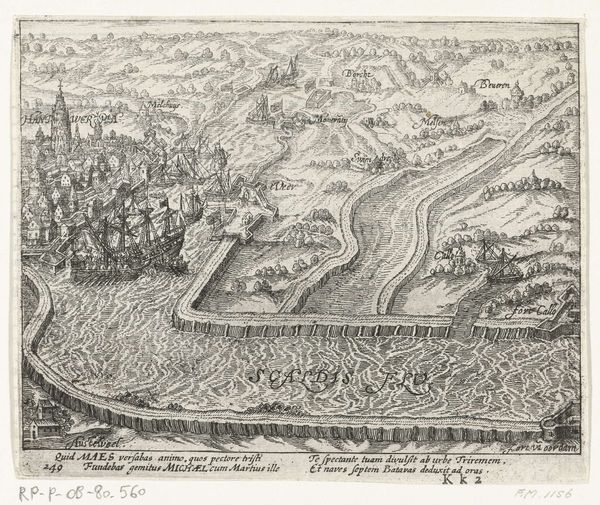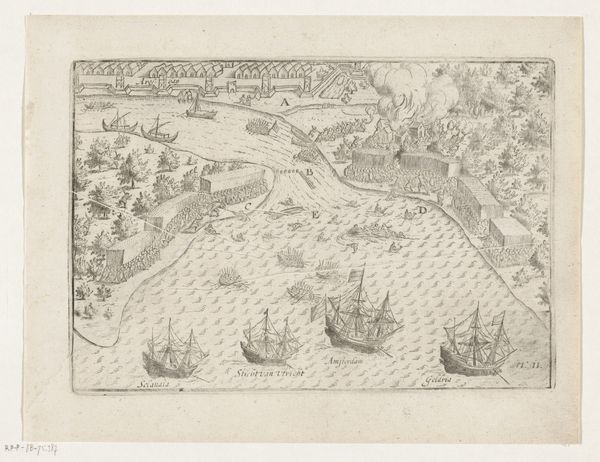
print, engraving
# print
#
old engraving style
#
11_renaissance
#
cityscape
#
history-painting
#
northern-renaissance
#
engraving
Dimensions: height 201 mm, width 305 mm
Copyright: Rijks Museum: Open Domain
Editor: Here we have Frans Hogenberg's "Inname van Rheinberg, 1590," an engraving from around 1590 to 1592, now housed at the Rijksmuseum. There's something stark about the monochrome depiction of this city under siege, an almost clinical quality to the rendering of conflict. What stands out to you in terms of how this image reflects its time? Curator: I find myself drawn to the labor embedded within this seemingly straightforward historical record. Consider the intense work required to create the engraving itself: the physical act of carving into the metal, the multiplication of images through printing, and the dissemination of this visually manufactured "news." Do you think the process of engraving itself shapes our understanding of the event? Editor: I think that's a really interesting point. Because it’s an engraving, it lends itself to being reproduced. It was an important document for dissemination to the public to show how battles played out and to influence public opinion. How would this work differ if it was an oil painting, for instance? Curator: Precisely. The nature of printmaking inherently democratizes information, in a way that painting, by its singular nature, doesn’t. Furthermore, the sharp, graphic quality lends itself to emphasizing the constructed nature of this depiction. It highlights that what we see is a mediated reality shaped by the artist's choices. This in itself gives the impression of historical validity and shows that the artist was really present when this happened. The work really highlights the connection between art and political intention. Editor: It's fascinating to think about this piece as not just a representation of history, but also as a product of its own historical and material circumstances. I never thought about print making as a type of labor and an accessible source of information at the time, compared to paintings. Curator: And hopefully you'll now examine images of military battles using this materialist lens!
Comments
No comments
Be the first to comment and join the conversation on the ultimate creative platform.
